Why I’m on US recession watch despite 2% growth
As I start this post, I am naming it “Why I’m on US recession watch despite 2% growth”. I don’t know if that name will stick when I publish this piece; nonetheless, that is the theme I am trying to get across. When I look at the economic data, it shows a near-term in the 2% growth range – stall speed or slightly below. But when I look at the same data for medium-term clues, I still see reasons to be concerned, and, therefore, I continue to be on recession watch. Finally, I am not at all sure the Fed sees the picture as I do. December was a policy mistake. And I can’t rule out others going forward.
When I start a forward-looking post like this, I first like to look back and remind myself of what I had been saying in previous forward-looking posts a few months ago. It keeps me honest as well as helps me to avoid lurching to half-baked macro conclusions based on incoming data, Running the search term “recession watch” through my archives yields the following snippets:
- Why I am now officially on recession watch (15 Jan 2016): “A lot of people are pointing to manufacturing weakness as a harbinger of worse things to come in the US. I’m not quite there yet. But I do believe the US economy has decelerated and is now at stall speed, given the steep and long-lived drop in payroll growth. Therefore, I am on recession watch. Recession is not a base case. But it is no longer a tail risk either. Recession in the US is a reasonable worst case outcome for the economy, especially if the Fed continues on a path of interest rate increases. Markets are sending this signal to the Fed right now. And I believe the Fed will probably stand down in March as a result. But that won’t be enough to ensure a positive outcome as prior tightening is still working with a lag.”
- How this business cycle ends due to credit writedowns (19 Jan 2016): “My overall take here, then, is that both real economy and financial economy data show a slowing economy that has the hallmarks of the end of the business cycle. Nevertheless, it is still unclear whether this slowing will lead to recession — and if it does, when that recession will occur or how deep it will be. I am on recession watch now though. And while I tend to think we will avoid another serious financial crisis, I also believe we are close to the end of this business cycle.”
- We are not in recession right now (27 Jan 2016): “While the US economy has decelerated enough since mid-2015 to put me on recession watch, it has not reached the point of recession. Moreover, the data do not indicate a recession is in the offing in the near-term. Rather, a combination of policy error and exogenous shock make a recession a reasonable worst case scenario for 2016. This is the case I have been making.”
So that was January. And re-reading through those comments, I am still 100% in support of them. The US economy is still growing at about a 2% pace for year-over-year real GDP. That’s not spectacular, but it’s not a recession either – even if you claimed that inflation is being understated and that the consumption deflator should be higher. Moreover, other data points back this up from ISM data to jobless claims to personal consumption numbers. The composite picture we have today — in a world in which GDPNow is tracking well over 2% for the quarter — is exactly the same one we had in January when GDPNow was tracking a sub 1% quarter — 2% growth and no recession in the near term.
But let me use this post as a transition to the data points that worry me, starting with last month’s employment data. And as we look at the data, I want to remind you I am looking at this as a situation where employment = income and wage growth = income where income supports non-debt-fuelled consumption, which leads production. And the thinking here is that if you look at change of change metrics you will see coincident and leading indicators. And this is even though employment is generally considered a lagging indicator since large scale job cuts only come after a downturn has begun.
Here’s my new favorite 2nd derivative chart: year-on-year change in non-farm payrolls.
And what this number tells you is that employment growth in the US topped out in early 2015 – meaning we are over one year into what is now an accelerating downturn in the change in the change in non-farm payrolls. This is a very bad sign, both due to the now accelerating nature of the decline and to the longevity of the downturn. David Rosenberg was right on the money in his analysis of these data:
Look at the pattern; +233,000 in February, +186,000 in March, +123,000 in April and +38,000 in May. Detect a pattern here (he asks wryly)?
You can see why I was gagging when I heard some of the pundits on “bubblevision” tell the anchors this morning that the Fed will look through one number. Dude — this isn’t one number. It is a pattern of softness that has been in effect for the past four months … and counting.
In terms of sectors, two developments really stood out and neither particularly constructive.
First, goods-producing employment declined 36,000, which was the steepest falloff since February 2010. But this is not just one data-point but a visible weakening trend — this critical cyclically sensitive segment of the economy has contracted now for four months in a row and the cumulative damage is 77,000 jobs or a -1.2% annual rate.
I don’t want to alarm anyone but the facts are the facts, and the fact here is simply that this is precisely the sort of rundown we saw in November 1969, May 1974, December 1979, October 1989, November 2000 and May 2007.
Each one of these periods presaged a recession just a few months later — the average being five months.
There was just one time, in the 1985/86 oil price collapse, that we had such a huge decline in goods-producing employment without a recession lurking around the corner — but the Fed was easing then and fiscal policy was a lot more accommodative than is the case today.
I see similarly ominous data when I look at jobless claims. Look at the year-on-year change in jobless claims since the beginning of 2012:
Those numbers are on a continual rise from the end of 2014 to today. To the point that we are on the cusp of an “income shock” i.e. where more people are filing for claims than they were a year ago. When that income shock hits +50,000 claims, it has consistently been an indicator of recession (see my charts from June 2008). If we take this time series back to March 2009, when the recession ended, only once has the year-on-year level risen – and that was followed by massive policy accommodation.
So the labor data in the US are very weak in my view – and they have been weakening for a full 18 months now to a level that is alarming regarding the future impact on the economy. All of this was clear back in December when the Fed hiked the first time. And it is even more clear today even as Fed officials act like they want to hike again. So either the Fed just doesn’t get it or it is looking through the data because it has other policy objectives. I believe it is more likely the former than the latter – because we witnessed the same policy blindness in March 2006 when the housing bubble had already burst and Ben Bernanke was telling us that a flattening yield curve didn’t matter. Yet again, we see a massive flattening. But the Fed is looking through these data as if it didn’t matter.
At least the non-farms payroll data hadn’t yet turned south then.
My interpretation of what has happened? The Fed’s low rate policy distorted private portfolio preferences toward long-lived assets, projects with long lead times, and investments that required huge capex – 100-year Petrobras bonds, junk-rated US frackers, 100-year Irish bonds, subprime auto and so on. As the Fed moved to taper QE and eventually to raise rates, the result was a sell-off in these assets and distress that has now leaked into the broader economy. If you compared the non-farm payrolls charts from the last cycle to this cycle, it would suggest we are well into 2007, a year in which recession began in December. Jobless claims data look more late 2005-ish.
My hope is that this is a mid-cycle scenario a la 1986 because we still haven’t seen a huge uptick in single family home construction or enough residential investment to think it can’t take the baton from energy – keeping this cycle on track. My worry is that the data are showing end of cycle weakness. And given the fact that this cycle is already seven years long, I believe it is more likely that we are near the end of cycle than we are near the beginning.
If in fact, we are near the end of the cycle, we are also in the unfortunate position of having no counter-cyclical monetary policy space and limited political fiscal space. That means no yield curve steepening. Instead, we will see flattening. And the distress in high yield will be acute. Bond yields may rally but I don’t see equities benefiting since earnings are already in decline. Instead, there will likely be a wholesale flight to safety and crisis. To the degree that the Fed decides to hike into this weakness yet again, we should expect the credit situation to be worse.
We are muddling along at stall speed. 100%. And this could continue. But the data are increasingly suggesting it won’t.
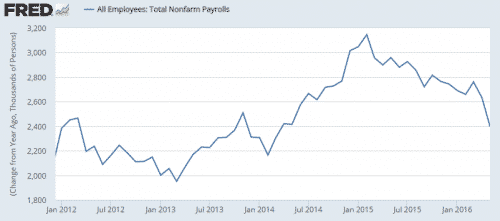
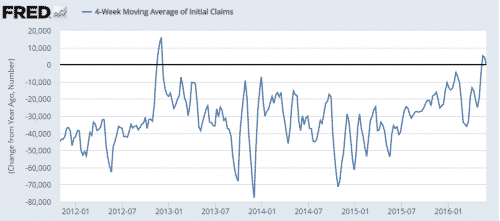
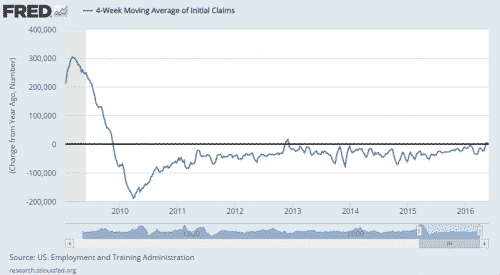
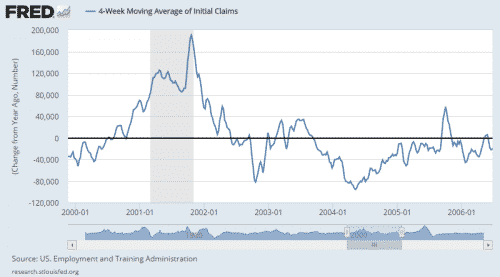
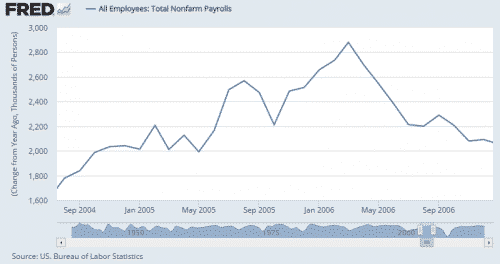
Comments are closed.